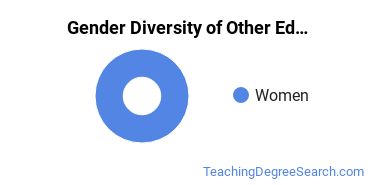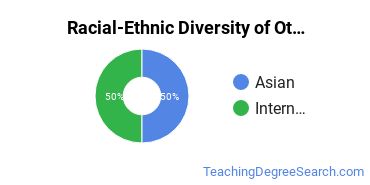Other Education at Columbia University in the City of New York
What traits are you looking for in a other education school? To help you decide if Columbia University in the City of New York is right for you, we've gathered the following information about the school's other education program.Columbia is located in New York, New York and approximately 30,135 students attend the school each year.
Want to know more about the career opportunities in this field? Check out the Careers in Other Education section at the bottom of this page.
Columbia Other Education Degrees Available
- Master’s Degree in Other Education
Columbia Other Education Rankings
There were 0 student who received their doctoral degrees in other education, making the school the #48 most popular school in the United States for this category of students.
Other Education Student Demographics at Columbia
Take a look at the following statistics related to the make-up of the other education majors at Columbia University in the City of New York.
Columbia Other Education Master’s Program

In the other education master's program at this school, racial-ethnic minorities make up 75% of degree recipients. That is 38% better than the national average.*
The following table and chart show the race/ethnicity for students who recently graduated from Columbia University in the City of New York with a master's in other education.

| Race/Ethnicity | Number of Students |
|---|---|
| Asian | 3 |
| Black or African American | 0 |
| Hispanic or Latino | 0 |
| White | 0 |
| International Students | 1 |
| Other Races/Ethnicities | 0 |
Concentrations Within Other Education
Other Education majors may want to concentrate their studies in one of these areas. The table shows all degrees awarded in this field awarded for all degree levels at Columbia University in the City of New York. A concentration may not be available for your level.
| Concentration | Annual Degrees Awarded |
|---|---|
| Other Education | 11 |
Related Majors
- Educational Administration
- General Education
- Education Philosophy
- Teacher Education Subject Specific
- Special Education
References
*The racial-ethnic minorities count is calculated by taking the total number of students and subtracting white students, international students, and students whose race/ethnicity was unknown. This number is then divided by the total number of students at the school to obtain the racial-ethnic minorities percentage.
- College Factual
- National Center for Education Statistics
- O*NET Online
- Image Credit: By Nandaro under License
More about our data sources and methodologies.
